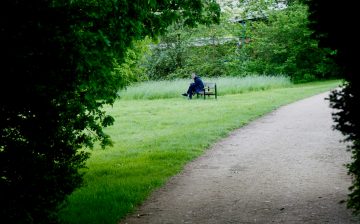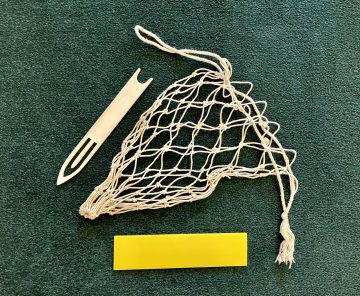A Thought to Share
Until December 2022 called “Thought for the Month”

Last Sunday (22 September), some were attending the Scottish Methodist Gathering in Stirling, so our morning service – “The Rosyth Gathering” –took a rather different and less formal character. Held in the Church Lounge, our songs were interspersed by prayers from Mary Kidd, and Ann White shared some thoughts about Jeremiah.
We were asked: “What do you know about Jeremiah? Who was he? What did he do?” and Ann went on to describe his life: “… in a cistern … in prison … prophesied about Babylonian invasion … didn’t have a very good life. But things were about to take a turn for the better”, as we learnt when Ken read from Jeremiah 32:6–15: “Houses, fields and vineyards will again be bought in this land”. Ann went on …
“However, when the Babylonians did come, he was allowed to stay behind, and he met God in many unexpected places. He went to the potter’s house when he needed to leave the hustle and bustle behind, and his spirit was renewed.
“When I was in ministry, there were many times when I needed to have my spirit renewed. A member of my first congregation was a healing touch practitioner. I didn’t really know what healing touch is, but I went along to find out. Healing touch has a bit of a false name, because the practitioner doesn’t actually touch you, but rather he/she acts as a conduit for the Holy Spirit to minister to you.
“I don’t see a healing touch person these days, but I still take quiet time to relax in God’s presence. For me it is no longer the potter’s house I go to, but I sit on the end of my bed and gaze on God’s handiwork in the garden. Now don’t get over-excited! If you have ever seen Mary’s garden, it is nothing like mine – I just plant up some pots at the beginning of summer and by this time of year God’s handiwork fills them with weeds!
“I’ve always felt a connection with Jeremiah having a place to go where God’s spirit can wash over me. A friend has a prayer chair where she sits in God’s presence. Do you have a place to sit in God’s presence? It doesn’t matter where it is. As long as you can feel close to God. And God will come close to you. Amen.”
In the time of sharing that followed, others told of ways, places and times where God had made Himself known to them, and we felt His presence amongst us.
The second Sunday running on which we had benefitted from a rather different and memorable time of worship. Our time together was completed by the fellowship lunch that followed – heartfelt thanks to Lorraine Wilkinson for a splendid spread!
You can read Ann’s thoughts in a printable form at this link.
Photo by Beth Macdonald on Unsplash
On 15 September, our service of Morning Worship was led by Deacon Natalie Clark. Our devotions centred about the very pointed question that Christ put to his disciples in the Gospel reading (Mark 8:27–38) that was translated for us as “But you, who do you say that I am?”.
As part of our worship Natalie used the set of pictures of Christ from a wide range of times, places and styles, depicting his incarnation, passion, and resurrected life that has been produced by the St Clare’s at the Cathedral Community in Coventry. We were each invited to select a picture that spoke to us, and to reflect on it, and later some of us were asked to share those reflections. Altogether a very thought-provoking and inspirational service.
Why not take a look at the images at this link and think about your answer to Christ’s question? Where does this lead you? and us as a community?
A rich variety of translations of Mark 8:29 can be found at this link.

This is how Professor John Sawkins ended his sermon at our service of Morning Worship on 5 May 2024, when he had been preaching on Matthew 6.14–15 under the title “Forgive us our trespasses”:
The first disciples that Jesus called, Simon Peter and Andrew, were fishermen. So were James and John, who were in a boat with their father, mending their fishing nets, when Jesus called them.
Mending nets – fixing breaks in the cords that joined the knots in the nets to each other.
That’s a good image for what we as disciples of Christ, are called to do.
To re-join connections that had been broken. To re-establish the bonds of association, of friendship and of love, between people. To play our part in doing so through forgiveness. And to support people and organisations whose work it is to do that across our society.
For in Christ we have been forgiven.
In Christ we are forgiven.
And in Christ we are called to forgive.
Thanks be to God. Amen.
The extract doesn’t do his sermon justice … it was inspirational and challenging, and firmly rooted in today’s issues, so you need to read the whole thing at this link.
In case you’re wondering why the illustration … it’s of some of the items that John used is his all-age address, entitled “Being joined up”. We see the ball net made by John when at school in Hull, together with the tools used to make the net – which still works. And this is because the knots are working … an apt illustration for both the address and for the sermon that followed.

Last Sunday our friends at St Margaret’s celebrated Candlemas, the Presentation of Christ in the Temple, and Rev Sheila Cameron reflected in her sermon on the watching and waiting of Simeon and Anna. Here are some of her thoughts:
The story of Simeon and Anna meeting the infant Jesus is a story about patient waiting finally rewarded, and it’s also a story about vision. … There are times when we all wait for promises to be fulfilled; and as people of faith, we look for signs of God’s presence and purpose in our lives. And we’re encouraged in our waiting when we have a clear vision of what could be and must surely be. Luke shows us through both Simeon and Anna that, if we hold on to our faith even when nothing seems to be happening for us, it will be rewarded in God’s good time, and that the Holy Spirit of God will be revealed in us and through us, his faithful people.
…
We’re all called to times of waiting for God to answer our prayers, times when our faith is sorely tested. The story of Simeon and Anna tells us that we should never give up hoping for the Lord’s appearing. Sometimes we have to wait a very long time but, if we wait in faith, our faith will eventually be rewarded. … If the things we pray for really are the things God wants for us, then we can be assured that our prayers will be answered in God’s good time. We may not get everything we desire, but we’ll get what in the sight of God is right for us. May the things you hope for be the things God desires for you, and may God sustain you with wonderful visions of things to come in all your times of waiting. Amen.
Do read the whole sermon, which is available at this link.
Our picture of someone watching and waiting is by Ümit Bulut and comes from the Unsplash platform.

On 21 January we welcomed Professor John Sawkins as our preacher. The family are well-known bakers (son Peter became the youngest-ever winner of the Great British Bake Off in 2020), so perhaps it wasn’t surprising that John chose a cake to illustrate his all-age message, and it was also referenced during his sermon.
Cake, address and sermon were all full of good things … after the service we shared and enjoyed the cake, but John’s challenging thoughts deserved a wider audience. We’ve put some extracts below, but please click on the titles, which are links to the full texts – they won’t take long to read, though they bear thinking about at length.
The all-age address “Why Cake?” initiated the theme:
“So, science can tell us all about the cake and it is very, very good at doing that. But there is one thing, one rather important thing about my cake that science can tell us absolutely nothing about … it can’t tell me why the cake was made.”
“… the clues to why the world and we were made are found in the stories that we read in the Bible. Because they tell us about God. About why he made us, and what we are here for.
“And the answer is quite simple. Why did he make it all? He made everything because he is love. And what are we here for? We are here, our purpose in life, is to love him and to love each other (our neighbours) as we love ourselves. And in doing so to enjoy and live life, which is his gift, to the very full.”
In his sermon, “What is the church for?”, which John based on Hebrews 10.24, expanded on the theme:
“Great art, ingenious science can only get us so far. They can tell us how the world came to be made and what it is like now, but they cannot answer that fundamental question, “why is there something, rather than nothing?” (Remember the cake!)
“They cannot explain the bigger story that our lives are part of. They cannot give us hope. Our hope, the hope that we celebrate and reaffirm every week, rests on what Jesus Christ did for us, and what his life and teaching, his death and resurrection revealed to us about what God wills for us.
…
“The Church is here to tell the story of Jesus. So –
every time we listen to the gospel of Jesus Christ being read in church,
every time we act out a nativity play,
every time we break bread to remember Christ’s death and celebrate his resurrection
– we are fulfilling our purpose as a church.”
